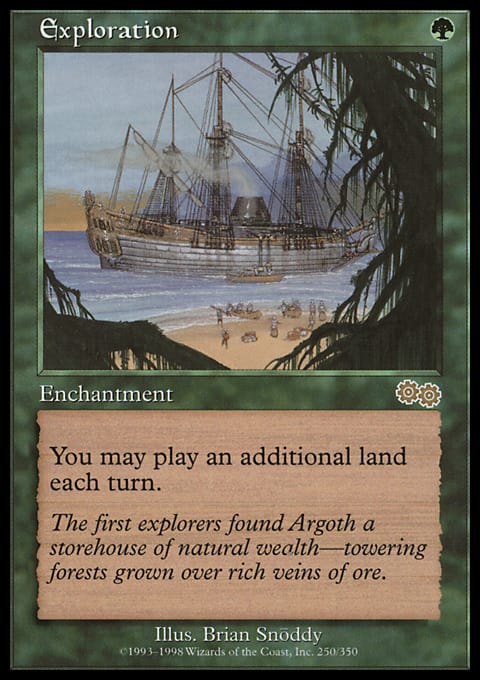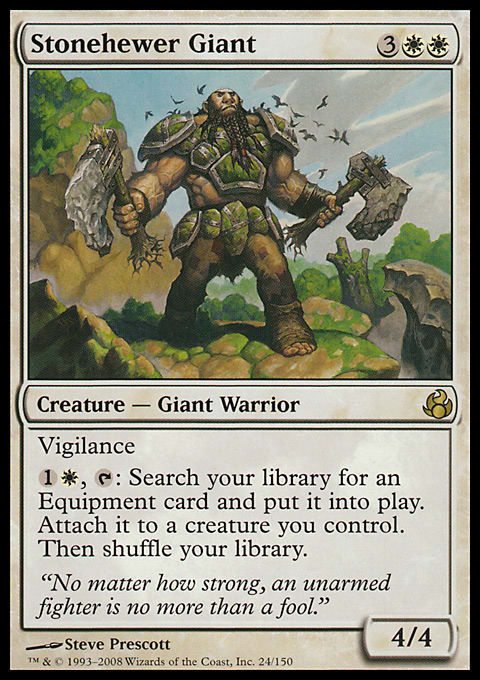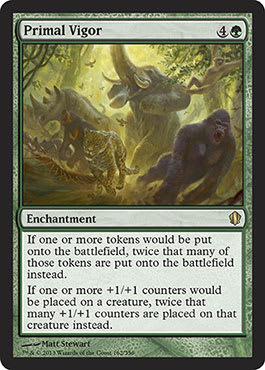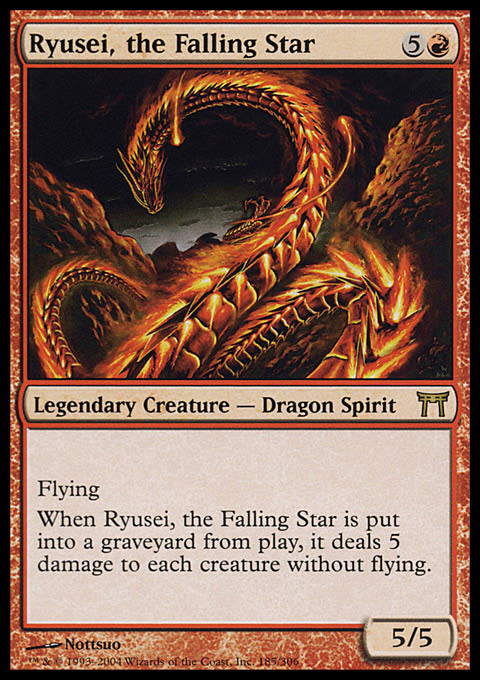Over the next few weeks, I will be doing a number of articles revolving around reader questions. If you have anything specific you would like addressed, it is not too late to send me a message or leave a comment. This week, I will be concentrating on something I barely touched on in the past and that a few people asked about this past week: specialty sets. This can have a broad meaning when it comes to sets throughout the history of Magic, but this time, I will be focusing on sets like Modern Masters and Conspiracy while leaving out From the Vaults and Premium Deck Series, as they act much differently in the long term.
So, of course, these sets are usually aimed at creating an enjoyable Limited environment or alternative game type, such as Planechase, but they are also used as vehicles to get some of the harder-to-reprint cards back in circulation. Each of these sets usually has a limited print run, meaning the price adjustments are much more rapid when the product is finally off shelves. This creates a much more reasonable window for targeting cards when they finally hit their lowest expected prices. Not only do the prices of these sets continue to grow much more rapidly than a normal set, they also have the added allure of a different set symbol, which, for some unexplainable reason, puts many of them twenty percent or more higher retail than their set-printed counterparts.
There are a few different topics to take note of when looking at these sets, and it does not all have to do with the set. One such example is the foil prices of cards that are reprinted in these sets: You will notice, if you watch the price, that it will usually be almost untouched, as the reprint is only nonfoil, and in many cases, the foil from the set will see a small spike shortly after the reprint. This is worth noting, as many people assume when a card is reprinted that all versions of that card are suddenly worth less, and they are usually more willing to move them, thus leaving you an opportunity to jump in while the reprint hype is still active and, after waiting a short time, turn those cards over for a quick profit. That is not to say that every card that is reprinted is poised for a spike in the short term, but even those that do not show a positive gain rarely depreciate any. This, of course, does not apply to the sets such as Modern Masters that also have foils, but those sets also have a few keys on what to watch in the short term.
In the case of Modern Masters, and I imagine some of Conspiracy, it is more relevant to watch the reprints that are in demand with a new art. Watching the trajectory of the staples from Modern Masters, we can see a very short initial drop in the price when the set was first announced and the reprints were confirmed. This drop in value was short-lived, as it took only a few short months to not only regain the initial value, but in some cases such, as with Tarmogoyf, it actually exceeded the initial number. This, of course, is almost solely based on demand, so it is important to understand what cards are seeing enough play to support the reprint and which will tank due to the sudden oversupply.
This is not to say that some of the smaller cards that tank never have a chance to be worth money again—it just will, on average, take them longer to return back to their initial prices before the reprint. Cards such as Stonehewer Giant, which was a casual powerhouse before, is still just as relevant, and slowly, over time, the demand is closing in on the oversupply, which is driving the price up. The process can take anywhere from months to years depending on how limited the print runs were and how many more times the card is printed.
We have already seen just how expensive some of these limited-run sets can be, with both Modern Masters and the original Commander sets now well over double their initial prices. In the case of Modern Masters, this is due to the demand still for Modern staples, and though that has plateaued slightly over the recent few months, that does not mean the product, and the cards inside, will not appreciate.
While looking at reprints and understanding where their prices are probably going to end up over a given period of time is important, it is equally relevant to keep an eye on any of the new cards that are released with these products. With the Commander and Planechase sets, much of their value is derived from the few chase reprints, but also from the new cards that are only contained within that product. The commanders from the original Commander serve as perfect examples of how the market eventually adjusts when there is a limited supply of a card, even without a heavy demand. For those that do initially have apparent value, such as True-Name Nemesis, it is usually best to stay away, as they have tendencies to be reprinted or released in extra quantities shortly thereafter, but so many fly under the radar as they grow over time until, one day, people realize what they thought was just above bulk is now a $10 card. This, of course, drives demand up even more for the sealed copies, as people start to see the value contained within, and once the market is swept clean, the time it takes for the rest of the set to catch up is usually relatively short.
That being said, it is usually best to hold anything that would be considered bulk from any of these sets, as the set symbol alone will carry the value down the road. Bulk rares from normal sets show up on buy lists frequently when they have the Commander or Planechase symbol, and most people do not consider the extra value when trading them away. If you can manage to pick up anything from a recent specialty set that has any use at all, it is almost a sure bet you will see returns in a much shorter time period than speculating on long-term value from Standard. There is a reason Primal Vigor is more expensive than Parallel Lives even though it has been printed more recently, and that reason is simply availability.
The rares are not the only cards to watch from these sets, either, as in reality, the single-copy printings in most of the Planechase, Archenemy, and Commander decks could all be rares if you really break it down anyway. The fact that the set symbol is black and not gold does not mean it is not just as hard to find, as there may only be a singular copy in each deck. Even the commons and uncommons from these sets that would otherwise be bulk tend to hold some sort of value over their set-printed duplicates. When we pick collections, I have every card in each of these sets down as picks because, more often than not, once the set becomes a few years old, almost every card in the set—even the basic lands—hold some sort of value.
Specialty sets are also among the places I suggest people put their money if they are looking for an easy way to sit on something that will surely go up over time. Buying sealed product and sitting on it has always been a useful technique for those who have less time and more money but are still looking to remain in the market or gain value on their collections. Looking over the past few years, it becomes clear that you are better off sitting on a box of Conspiracy for two years than you are sitting on Journey into Nyx—or any other Standard-legal set for that matter.
Most sealed product gains incremental value over time regardless, but these sets seem to quicken that pace significantly and are also much easier to move when the time comes just due to rarity. It is also worth noting that, for what you buy, you tend to have a higher concentration of value in each of these sets, as the filler is much less necessary than it is in a set that is going to be drafted for competitive play. This means that even if a few cards within the deck or set are reprinted, you will still see a positive trajectory, as their prices are not based on just a few cards for long-term value. Compare a Duel Deck with a box of Saviors of Kamigawa, and you can see why this route tends to be much more resilient to reprints.
Thank you for the feedback this past week. It seems most people still prefer to e-mail me their questions, so I will do my best to cover more of those in detail, but please feel free to also leave a comment below. I also enjoy hearing stories of local areas and how the different groups operate in order to allow card accessibility and what each person can do for his or her area to help, so feel free to write in, and just let me know what you have learned as well. Thank you as always for reading, and check back in next week for more reader questions.
Ryan Bushard


























